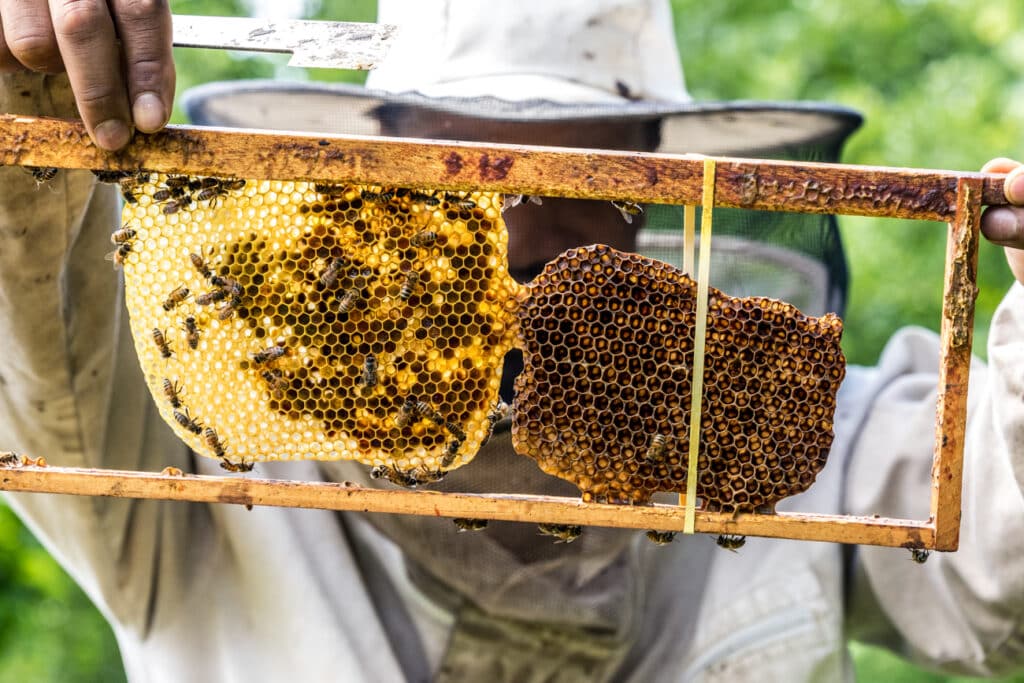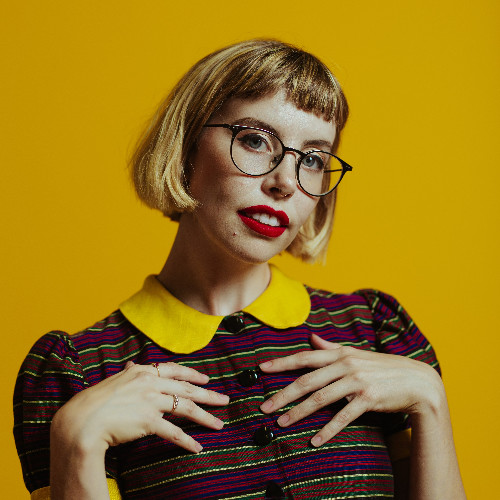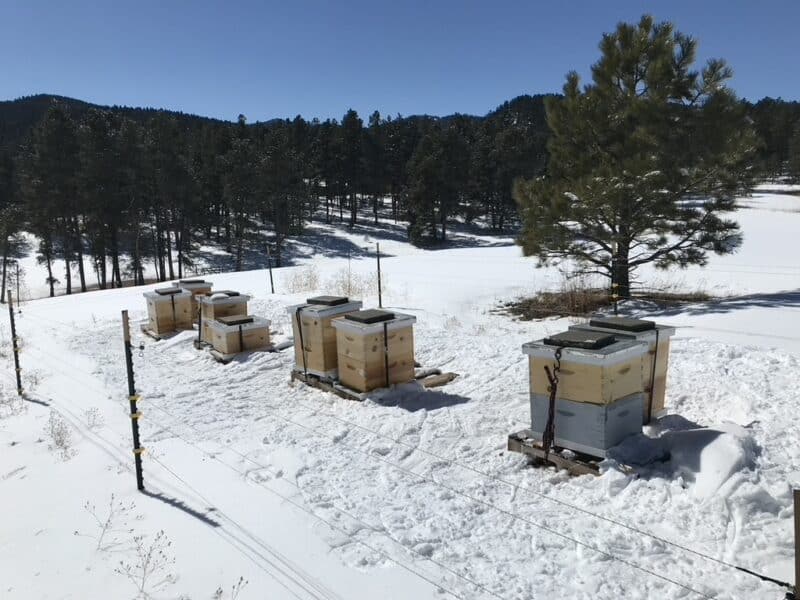Brandon Reynolds, also known as B the Keeper, is the future of beekeeping. Did you know that he’s found the secret sauce to beekeeping? After leaving an advertising job, he finally found his calling as a beekeeper and sustainability pioneer in his hometown of Cincinnati, Ohio.
In our Next-Gen Beekeepers series, Brandon walks us through his beekeeping journey starting out as an apprentice in the field. Brandon stresses the importance of using all 5 senses when tending to bees. Read more of our interview below to learn more about Brandon’s hopes and dreams of more biophilic designed spaces that include pollinator habitats and rebuilding an apiary after losing a ton of colonies during his first year.
What’s your name?
Brandon Reynolds — B the Keeper
What are your pronouns?
He, Him, His
Where do you live?
Cincinnati, Ohio
Let’s get into it! What first intrigued you about bees?
During my 4th year of college (2014), I worked for a local farm as an assistant in their herb garden. Work weeks consisted of pulling a few undesirables (weeds) here, planting something tasty there and sneaking a few morsels for yourself while the birds weren’t looking.
I’d occasionally see this guy in a giant hazmat chemical spill suit digging into bee boxes. At the time, my sole understanding of bees was that they made honey and stung people. The idea that someone could earn a living by working with flying thumbtacks left me feeling equal parts perplexed and intrigued.
What was your first experience with bees?
My beekeeping journey started as an apprentice at Carriage House Farm (where I previously interned) in the summer of 2017. I was fortunate to have a sensei who encouraged me to read, practice and have as many bee-centric conversations as possible. This framework culminated into a year of finding bees in weird places like fallen logs, an old truck tire and even the inside of my bee suit!

When you tell people you’re a beekeeper, what are their first reactions?
Five Years Ago: 🏃🏾♂️🏃♀️🏃🏻♂️💨 🐝🙆🏾♂️🐝
Now: 🐝🙆🏾♂️🐝 🏃🏾♂️🏃♀️🏃🏻♂️💨
LOL. Back in the day, people would think I was nuts. Nowadays, people equate “beekeeper” to a modern-day version of Captain Planet.
What’s your favorite part about beekeeping?
My favorite part about beekeeping is using all five senses to accomplish a task. Think about it: how often are we required to use ALL FIVE senses (smell, taste, sight, touch, and hearing) to succeed at anything? Beekeeping brings me down to earth more than anything I’ve ever done.
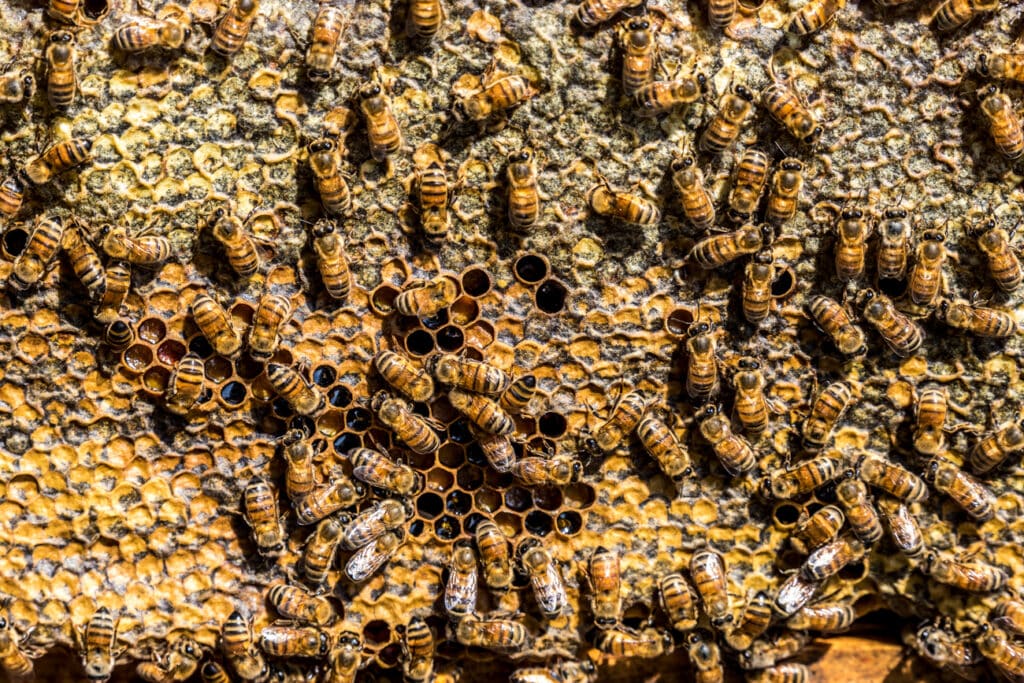
What is your most memorable moment as a beekeeper?
During my first year of beekeeping, I lost a ton of colonies. Mostly because I was trying every trick in the book to help keep them alive. I spent the next two years rebuilding the apiary with bees relocated from swarms and cut-outs while also performing splits with existing colonies. My most memorable beek moment to-date is the success I felt after rebuilding the apiary with feral bees and dialing-in my beekeeping style.
What do you think is important about bees and the work you do to care for them?
Whether they be honeybees, leaf-cutter bees or mason bees, all bee species require viable nesting and foraging sites to survive. This is why our primary focus at B the Keeper is incorporating more bee-friendly plant habitats into urban spaces. Bees help ensure the biodiversity of our region. It’s on us to lend them a hand!
How has being a beekeeper impacted your worldview?
Beekeeping has shown me that everything—and I mean EVERYTHING—is connected; from the foods we eat to the air quality of our cities and beyond. The sooner we face this reality, the more equipped we’ll be for tackling global issues like climate change, food insecurity and biodiversity loss.
Honesty time. Are you afraid of bees?
I remember taking my granddad out for a cloudy day of beekeeping back in 2017 and being deathly afraid of opening our largest hive on the farm. I had recently learned that inspecting hives on overcast days was a bad idea—I just didn’t expect the bees to be so overprotective that they’d chase me 50 yards away!
I’ve since learned my lesson and can now (safely) report that my fear of bees has washed away; though I do still tend to freak-out whenever bees fly up my shorts or through a hole in my suit. What can I say, we’re all a work-in-progress!
Where do you see the beekeeping industry in the next 10? 20 years?
My hope for the next decade and beyond is that the general public and beekeepers alike integrate more pollinator habitats into architecture and landscape designs. While new beekeeping tech is great, it’ll all be for naught if bees don’t have access to a reliable food supply.
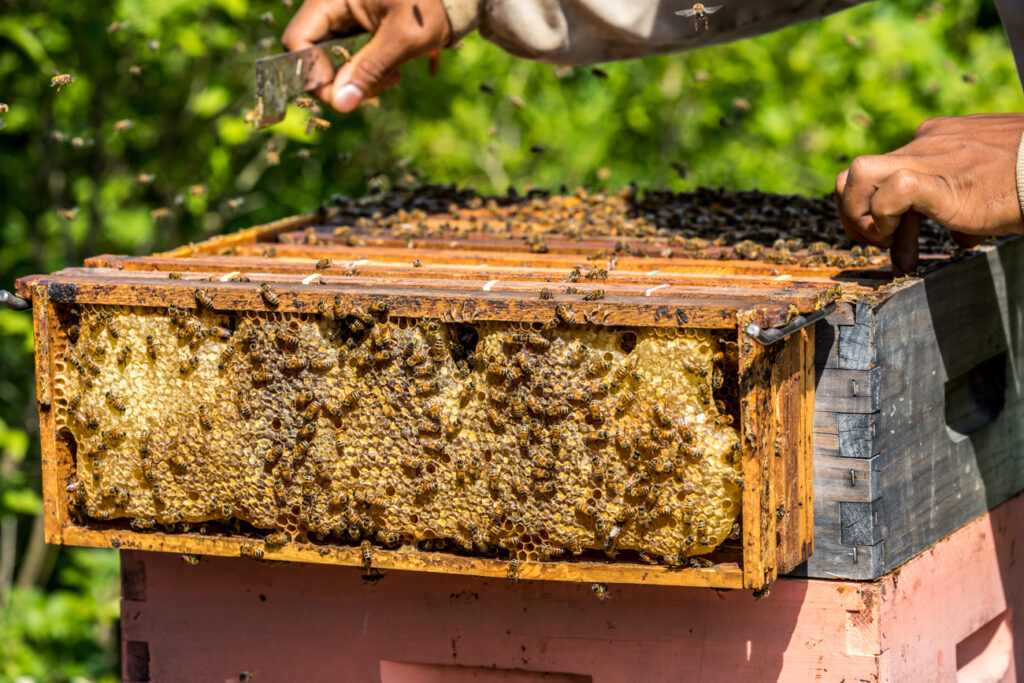
Any lessons for our readers who might want to embark on a similar journey as you?
Being a great listener is the secret sauce to enjoying life as a successful beekeeper. In my early days, I’d show up to the apiary fully suited and ready to rock and roll through as many hives as possible, only to find out the bees were jiving to an entirely different tune.
Over time, it’s become strikingly apparent that it’s best (for all parties involved) for me to show up to hives when I’m needed—as opposed to when I feel the need. Leaving your schedule at the door and opening your mind to what the bees have to share will save you countless hours (and stings) spent fumbling around.
What are you up to when you’re not beekeeping?
Believe it or not, I’m spending a bulk of 2021 learning how to cook like a higher class adult (e.g. better than pb&j, scrambled eggs and rice noodles), learning how to dance salsa and increasing my understanding of real estate development.
What’s next for you?
I’d like to spend the next few years growing our business and creating as many bee-friendly landscapes as possible in my hometown and ‘beeyond.’ I’m also looking forward to (finally) buying some land and starting my own apiary. Up ’till now, I’ve always kept bees for other people. It’s time to show myself some love!
Plug time. How can our readers support you and the work you’re doing?
My recommendation for readers is to learn more about the native, pollinator-friendly plants of their region along with incorporating more of them into their landscapes.
If you’d like to stay in the loop with our antics, check us out on Instagram @b_thekeeper. We have a lot of fun!
All photos by: Catie Viox


